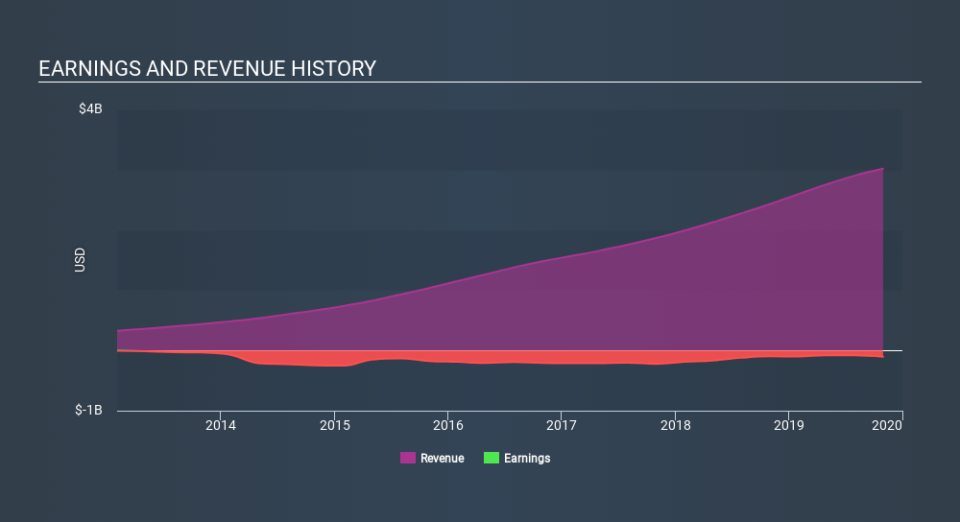Palo Alto Networks, Inc.'s (NYSE:PANW) Earnings Dropped -6.1%, Did Its Industry Show Weakness Too?

In this article, I will take a look at Palo Alto Networks, Inc.'s (NYSE:PANW) most recent earnings update (31 October 2019) and compare these latest figures against its performance over the past few years, along with how the rest of PANW's industry performed. As a long-term investor, I find it useful to analyze the company's trend over time in order to estimate whether or not the company is able to meet its goals, and eventually grow sustainably over time.
Check out our latest analysis for Palo Alto Networks
Did PANW perform worse than its track record and industry?
PANW is loss-making, with the most recent trailing twelve-month earnings of -US$103.2m (from 31 October 2019), which compared to last year has become more negative. However, the company's loss seem to be contracting over the medium term, with the five-year earnings average of -US$147.7m. Each year, for the past five years PANW has seen an annual increase in operating expense growth, outpacing revenue growth of 27%, on average. This adverse movement is a driver of the company's inability to reach breakeven.
Scanning growth from a sector-level, the US software industry has been growing its average earnings by double-digit 16% over the prior year, and 24% over the past five years. This growth is a median of profitable companies of 25 Software companies in US including LogMeIn, Materialise and NortonLifeLock. This means any uplift the industry is deriving benefit from, Palo Alto Networks has not been able to gain as much as its average peer.
Even though Palo Alto Networks is currently unprofitable, it has a sufficient cash cushion (US$2.9b) to pay for its upcoming operating expenses over the next year. This is a sign of good cash management.
What does this mean?
While past data is useful, it doesn’t tell the whole story. With companies that are currently loss-making, it is always difficult to envisage what will occur going forward, and when. The most useful step is to examine company-specific issues Palo Alto Networks may be facing and whether management guidance has regularly been met in the past. You should continue to research Palo Alto Networks to get a better picture of the stock by looking at:
Future Outlook: What are well-informed industry analysts predicting for PANW’s future growth? Take a look at our free research report of analyst consensus for PANW’s outlook.
Financial Health: Are PANW’s operations financially sustainable? Balance sheets can be hard to analyze, which is why we’ve done it for you. Check out our financial health checks here.
Other High-Performing Stocks: Are there other stocks that provide better prospects with proven track records? Explore our free list of these great stocks here.
NB: Figures in this article are calculated using data from the trailing twelve months from 31 October 2019. This may not be consistent with full year annual report figures.
If you spot an error that warrants correction, please contact the editor at editorial-team@simplywallst.com. This article by Simply Wall St is general in nature. It does not constitute a recommendation to buy or sell any stock, and does not take account of your objectives, or your financial situation. Simply Wall St has no position in the stocks mentioned.
We aim to bring you long-term focused research analysis driven by fundamental data. Note that our analysis may not factor in the latest price-sensitive company announcements or qualitative material. Thank you for reading.

 Yahoo Finance
Yahoo Finance 
